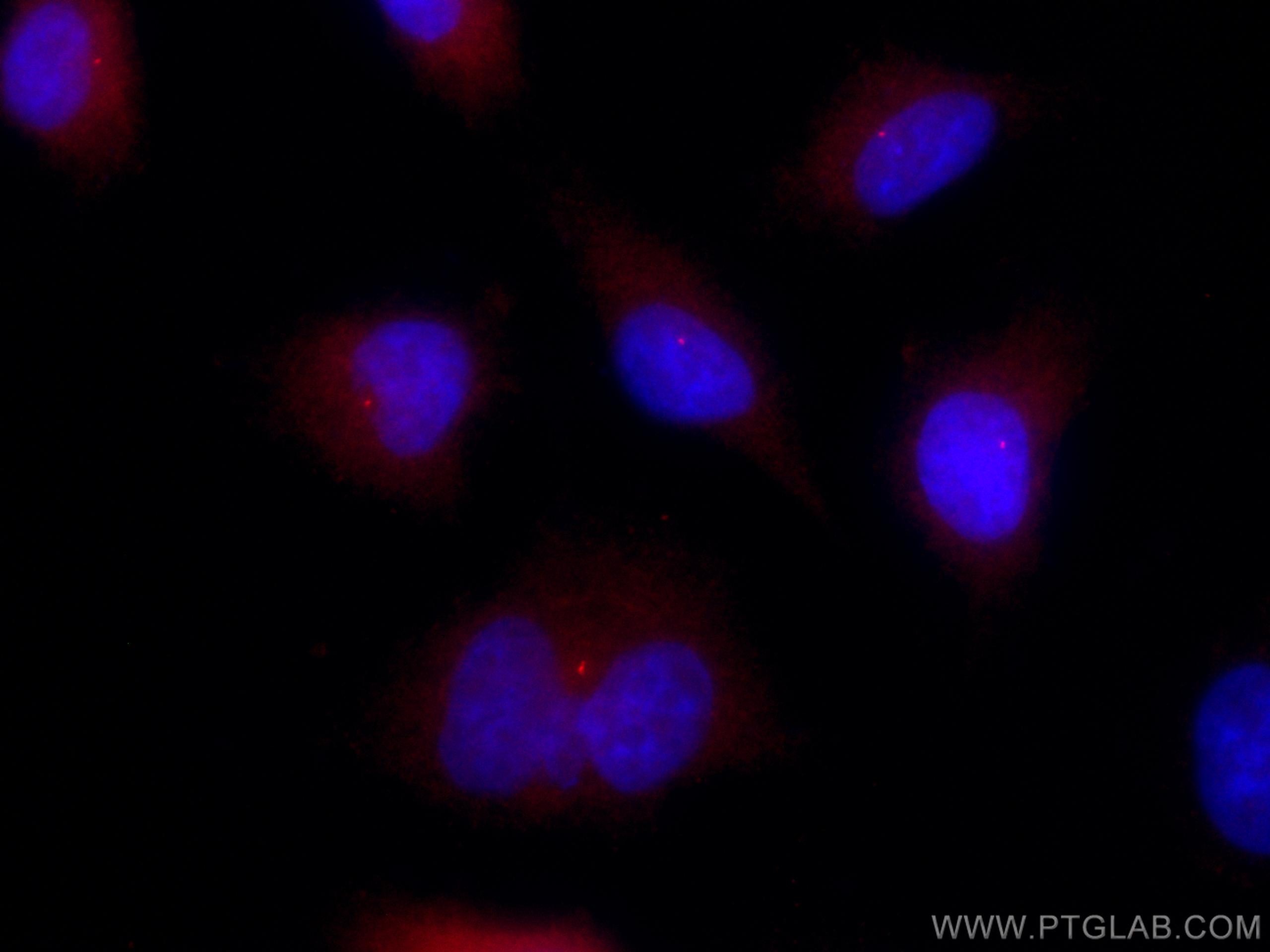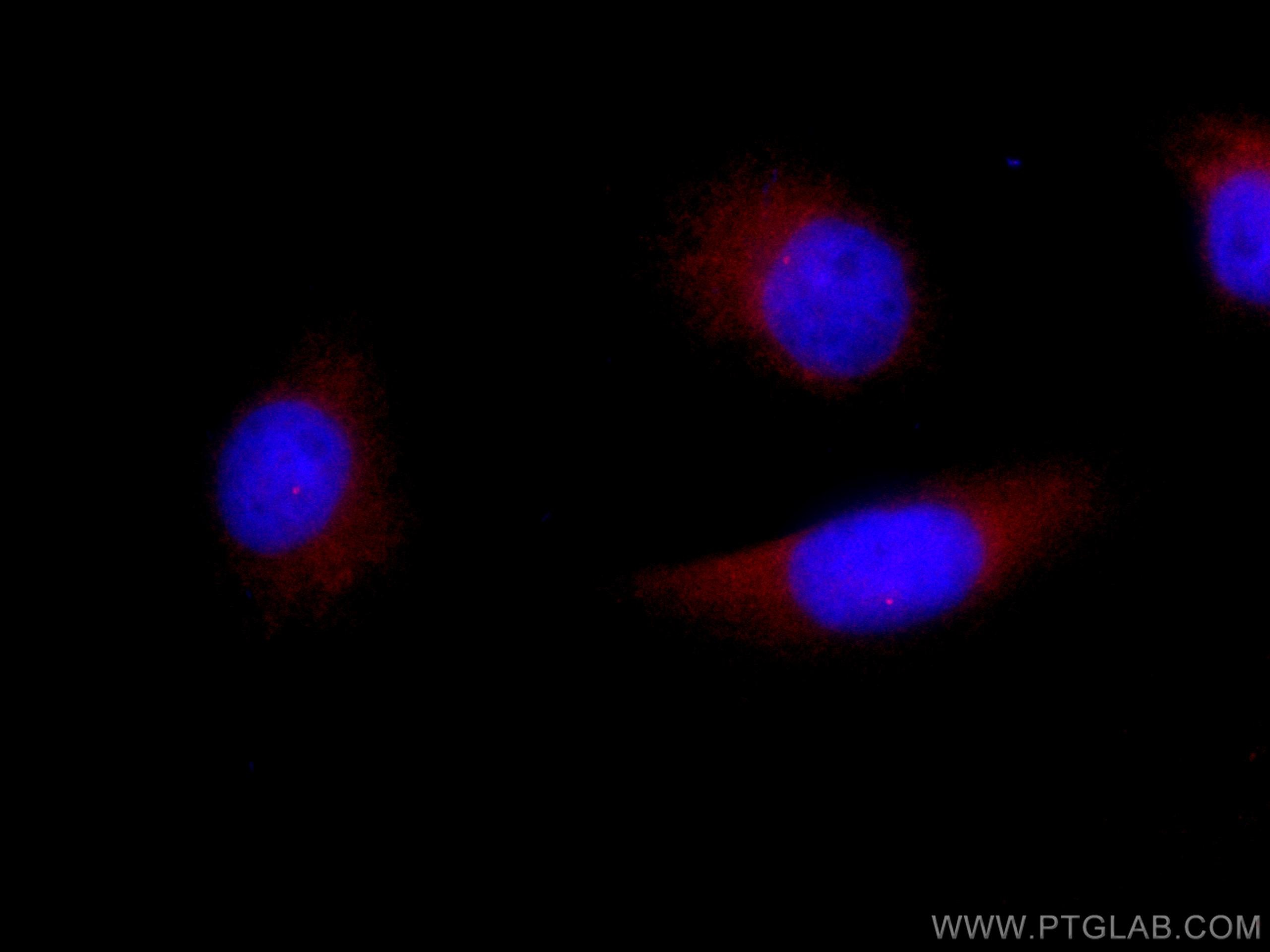Tested Applications
| Positive IF/ICC detected in | A549 cells, HUVEC cells |
Recommended dilution
| Application | Dilution |
|---|---|
| Immunofluorescence (IF)/ICC | IF/ICC : 1:50-1:500 |
| It is recommended that this reagent should be titrated in each testing system to obtain optimal results. | |
| Sample-dependent, Check data in validation data gallery. | |
Product Information
CL594-11531 targets FBF1 in IF/ICC applications and shows reactivity with human, mouse samples.
| Tested Reactivity | human, mouse |
| Host / Isotype | Rabbit / IgG |
| Class | Polyclonal |
| Type | Antibody |
| Immunogen |
CatNo: Ag2106 Product name: Recombinant human FBF1 protein Source: e coli.-derived, PGEX-4T Tag: GST Domain: 20-347 aa of BC023549 Sequence: LASHTRDTTGVSQMFPSSKARTKSLLGDDVFSTMAGLEEADAEVSVISEADPQALLQAMKDLDGMDADILGLKKSNSAPSKKAAKDPGKGELPNHPKPAGGAIPTKKSLPSPSSSGHQNRRFSSEDLEDPLGGLLSYDEGGITKQPPVTQSKTASDKSPSTVRDQGPSIPLTPGDTPIRKKEELLFDDGDDIMATLGFGDSPKAEKRQIGDQEGPRPARSTLDELLGRGMATKLLARPGTGEHREFKLDKKYQRPQDSEDMWGDEDFTFGAYQPTVVSSEGRQSRRQSVSRFFADSGADPKGEPGSKQSPPMASSPIQPRKGGADWLG Predict reactive species |
| Full Name | Fas (TNFRSF6) binding factor 1 |
| Calculated Molecular Weight | 1133 aa, 125 kDa |
| Observed Molecular Weight | 130 kDa |
| GenBank Accession Number | BC023549 |
| Gene Symbol | FBF1 |
| Gene ID (NCBI) | 85302 |
| RRID | AB_2919767 |
| Conjugate | CoraLite®594 Fluorescent Dye |
| Excitation/Emission Maxima Wavelengths | 588 nm / 604 nm |
| Form | Liquid |
| Purification Method | Antigen affinity purification |
| UNIPROT ID | Q8TES7 |
| Storage Buffer | PBS with 50% glycerol, 0.05% Proclin300, 0.5% BSA, pH 7.3. |
| Storage Conditions | Store at -20°C. Avoid exposure to light. Stable for one year after shipment. Aliquoting is unnecessary for -20oC storage. |
Background Information
FBF1, also named as ALB and KIAA1863, is keratin-binding protein required for epithelial cell polarization. It is involved in apical junction complex (AJC) assembly via its interaction with PARD3. FBF1 is required for ciliogenesis. FBF1 has six isoforms with MW 125-127 kDa, 99 kDa, 69 kDa and 55 kDa. This antibody is induced by N-terminal (20-347aa) of FBF1. It recognizes all the six isoforms.
Protocols
| Product Specific Protocols | |
|---|---|
| IF protocol for CL594 FBF1 antibody CL594-11531 | Download protocol |
| Standard Protocols | |
|---|---|
| Click here to view our Standard Protocols |






